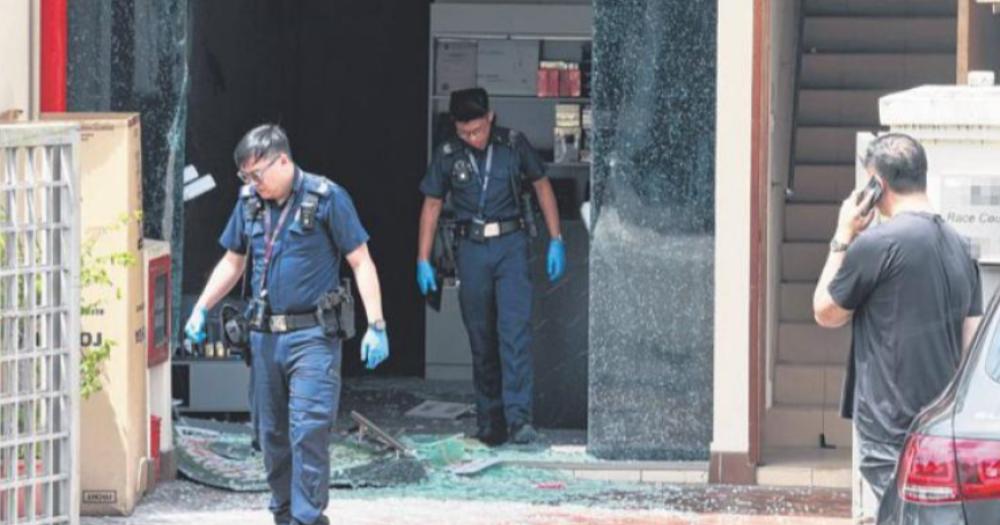Cemetery-like gardening plots spook Choa Chu Kang residents
When there are no plants yet, they look like graves.

A cluster of gardening plots next to Block 672A Choa Chu Kang Crescent has become a focal point among residents — as the grounds set aside for plants resemble graves in a cemetery with multiple burial plots.
A 60-year-old resident was so spooked by the look of the site that he would purposely "take a detour" to avoid passing by them at night, reported Shin Min Daily News.
Triggered mixed reactions online
According to Shin Min, the gardening plots gained traction online recently when a member of the public took to Facebook to complain about their "cemetery-like" design.
The complainant's sentiments were echoed by many in the comments section, who added that the rectangular design of the plots did not fit neatly with their surrounding environment.
However, some commenters also believed that the public should not read too much into the design.
They argued that the design's intention was to create common green spaces for residents, and the problem was only with its presentation, which have not met expectations.
21 gardening plots in total
When Shin Min reporters visited the Housing and Development Board (HDB) estate, they noticed there were a total of 21 plots in the garden.
The plots were built on top of a concrete ground and were surrounded by grass patches.
The walls of the plots were also made from concrete.
In terms of size, there was one horizontal plot that was larger than the rest.
A storage space resembling a pavilion was also seen next to the plots.
A resident in the estate told the Chinese daily that the construction works for the plots were "just completed a few months ago".
According to another resident who lived in the vicinity for 25 years, the authorities added those plots to the estate after it underwent renovation so that those who enjoy farming can grow their plants at their doorstep.
Some residents concur with observations
Several residents who spoke to Shin Min shared that they were spooked by the plots' design.
For one resident, surnamed Wu (transliteration), the plots' design looked "really weird" and "resembled cemetery grounds when viewed from above".
"My friend also felt the plots looked like graves after seeing them and that it's better not to look at them," recounted Wu.
Wu's sentiments were concurred by another resident, surnamed Huang (transliteration), who attributed the perceived resemblance to "the overly neat layout of the plots".
"If a fence were to be put up around the plots, they might not resemble a cemetery as much. Alternatively, residents can grow their plants on flat land. Now that the plots were built, they cannot be torn down," said Huang.
Other residents disagree
However, not all residents viewed the gardening plots in a negative light.
A resident, surnamed Weng (transliteration), believed that "the authorities had utilised empty space appropriately" by allowing residents to grow plants, which was something "worth encouraging".
She also urged her neighbours not to overthink the plots' design, adding: "I don't think there is anything inappropriate with the design. People should not be overly superstitious. When I saw the plots, I know they are meant for gardening."
Another resident, Iskandar (transliteration), pointed out that the plots' design was "quite common".
"When people grow plants and flowers in the plots, they would look even more scenic and enhance the landscape," added Iskandar.
Town council statement
In response to Mothership's queries, a Marsiling-Yew Tee Town Council spokesperson said that the design "was carefully planned to optimise the available space to cater for more greening efforts in the neighbourhood".
According to the spokesperson, the community garden's parterre was "designed by an experienced architect with a portfolio of local successful projects".
The garden incorporated a planter box design that is "commonly seen across Singapore".
"This design maximises planting space, allowing for more and larger functional plots, which is especially valuable given our land constraints," read the statement.
The spokesperson also highlighted that the garden features planter boxes set at different heights to ensure they are "wheel-chair friendly", allowing residents of all abilities to enjoy the space.
"We welcome the community to play a part in transforming the garden into a vibrant hub, with volunteer planting and painting efforts scheduled to begin early next year," read the statement.
The spokesperson also encouraged residents to visit the garden once it is completed.
Top images via Shin Min Daily News
MORE STORIES





















